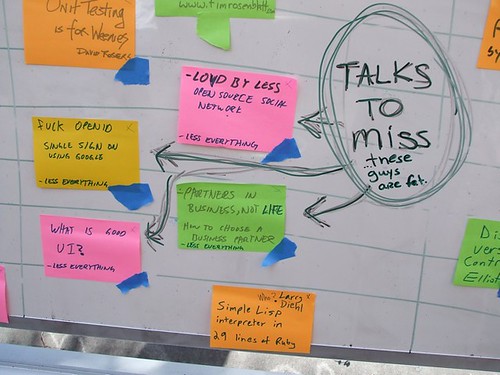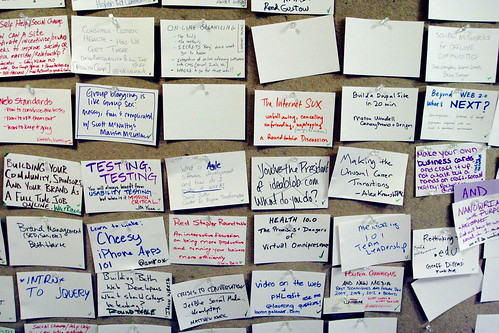Facebook and Twitter are on a collision course. And my money is on Facebook.
What gives?
With Facebook’s latest, and decidedly controversial redesign, they put status updates FRONT and CENTER. Admittedly, this wasn’t a huge departure from the way status updates were displayed before, and the change probably wouldn’t have been a big deal – until you looked at your Twitter home page.
Notice any similarities?
In the Venn Diagram of Features, Facebook Swallows Twitter
Twitter has exactly one function. Status updates. Twitter’s open API functions are what make it so popular. Anyone can write an application to read or update tweets. Because of this, Twitter has become as much a communication platform as it has a website. All of its 4 to 5 million users can use any number of methods to let their followers know they’re eating a plate full of pork lomein.
Facebook does all of this and more. In fact, Facebook has even finer grained control over friend listing and sorting. You can also “blackout” friends so you don’t see their status updates at all. Additionally, Facebook status updates accept comments or, to use the Twitter analog, “replies”, which effectively gives you threaded conversations.
Flip
Now, imagine tomorrow if Facebook flipped a switch and suddenly there was an open REST API through which you could update your Facebook status with a desktop application like Twhirl. [ed. note: TweetDeck is already on it] Now imagine you instantly begin seeing the steady stream of your Facebook friends updates. Then imagine you can expand and contract each update to see the conversation thread or even put a “pin” in one so it stays near the top of your feed to monitor it. Now imagine the 175 million Facebook users using this service compared to Twitter’s paltry 4 or 5 million.
If Facebook doesn’t make this move inside of the next 12 months I will be shocked. If you’re reading this and it’s April 2010 and Facebook doesn’t have its boot on Twtter’s throat then you should stop reading this blog because I’m full of shit.
I Welcome our New Information Overlords
Invariably there will be resistance to the new world order of status and presence trafficking. Let’s look at the situation objectively, though. Facebook’s platform is superior to Twitter’s in almost every way:
- Custom friend lists and groups at the source.
- Threaded conversations.
- Fine-grained friend control including temporary friend “blackouts”.
- A business plan that makes, you know, money.
- Forms of updates other than text. Presumably (and hopefully) this would be filterable.
Within 48 hours of Facebook turning on some kind of open REST / API system someone will release a desktop application with all or most of the features I’ve talked about baked in. From then it will only be a matter of time before Twitter becomes irrelevant.

